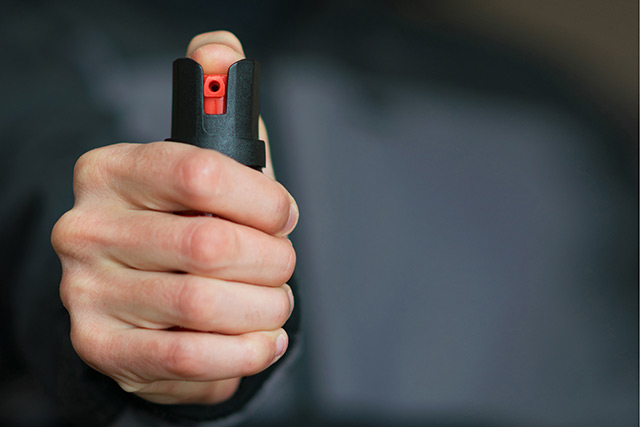
Pepper spray is one of the most commonly used self-defense weapons. While there are plenty of pepper sprays on the market, resourceful preppers make the most of what they already have or can make at home. (h/t to ThePreppingGuide.com)
Pepper sprays may be non-lethal weapons, but they are effective deterrents. The active ingredient in most pepper sprays is the phytochemical capsaicin, which is naturally found in chili peppers. Capsaicin is responsible for the burning sensation you feel when you come into contact with spicy peppers.
Store-bought pepper sprays contain a mixture of capsaicin and oil that is stored in pressurized canisters. The pressurization allows the solution to shoot forward when the nozzle is pressed.
If you happen to have concentrated capsaicin lying around, you're in luck. If you don't, it's still pretty easy to obtain – just find a handful of spicy peppers. Here's a quick video guide:
Homemade pepper spray
Not all peppers are hot and spicy, so choose the ones that will give you the desired effect of a pepper spray. A chili pepper's level of heat is measured in Scoville Heat Units (SHUs). Cayenne pepper has between 30,000 and 50,000 SHUs, while a Ghost Pepper has between 800,000 and 1,001,300 SHUs.
A typical pepper spray has an average of between 2,000,000 and 5,300,000 SHUs, so you need to choose chili peppers that have a minimum SHU measurement of 2,000,000. One of the best options is a Carolina Reaper with 2,200,000 SHUs.
Here's a quick video guide on how to make a pepper spray solution using Carolina Reapers:
For a standard bottle of pepper spray, you need a minimum of six to 12 chili peppers. The more chili peppers you use, the higher the amount of capsaicin your pepper spray will contain, which will make the solution more potent.
Use dried peppers for your homemade pepper spray. There are several methods for drying peppers:
- Sun drying – This method is simple and easy, but you will need one to two weeks for the peppers to fully dry out. Tie twine or a strong string to whole peppers and hang them in an area that receives constant airflow and direct sunlight. Drying the peppers whole will prevent mold from forming before they are completely dry.
- Using a dehydrator – If you have one at home, use a dehydrator to dry your peppers. For this method, don't forget to wear protective gloves to avoid burning your skin. Remove the stems and slice the peppers into rings, then spread them out on the dehydrator tray. Turn the machine to 135 F. The peppers will be fully dried out after five to 10 hours, depending on their thickness.
- Using an oven – If you don't have a dehydrator, drying your peppers in the oven is also an effective method. Slice the peppers and place them on a baking sheet with the seed sides up. Bake at 125 F and flip them over around the tray every hour or so. Depending on how many peppers you have and their thickness, it can take several hours for the peppers to dry out. Watch the peppers closely as they bake to prevent them from burning.
After drying the peppers, grind them up in a food processor. Make sure not to lose any of the peppers' extract (juice). In this step, you can add other ingredients to make your solution more potent. A tablespoon of ground black pepper can help induce a coughing effect.
Finish off your concoction with something that will help deliver the spray to the target, like rubbing alcohol or vinegar. Add approximately two cups of either liquid to the chili pepper mixture and mash the ingredients thoroughly.
Using a sieve, strain the mixture to get rid of the larger pieces that may still be left. Once fully strained, put the mixture into the refrigerator for 24 to 48 hours.
After one to two days, strain the mixture for the last time before adding it to a bottle or jar. Insert a funnel into the container and put a cheesecloth over the mouth of the funnel. Pour the mixture slowly through the cheesecloth and into the container.
Store your pepper spray in a cool place like the fridge. Homemade solutions usually last about two to three months before they go stale.
A DIY pepper spray may not be as effective as a store-bought one, but it is an affordable alternative. It also pays to have some kind of self-defense weapon in case of an emergency. Learn how to make other survival weapons at Survival.news.
Sources include:
Please contact us for more information.





















